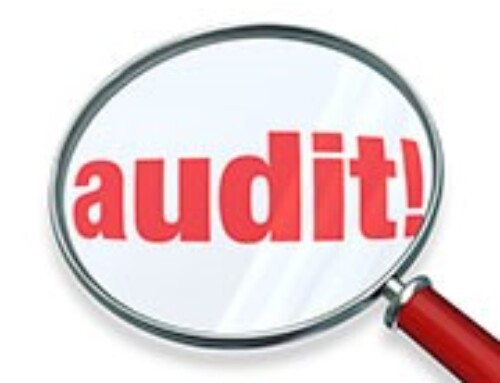If you lose money on a stock investment in a taxable brokerage firm account, the good news is that you can usually harvest a tax-saving capital loss deduction by selling that stock before year end. However, the wash sale rule might come into play, causing your anticipated tax loss to be disallowed. As the end of the year — the usual time for harvesting losses — draws near, you’ll need to know how the wash sale rule works.
Details of the Rule
For federal income tax purposes, a loss from selling stock or mutual fund shares is disallowed if you buy substantially identical securities within a 61-day period. This period begins 30 days before the date of the loss sale and ends 30 days after that date.
When you have a disallowed wash sale loss, the loss doesn’t just disappear (except when your IRA or controlled corporation acquires the substantially identical securities, as explained later). Instead, the general rule is that the disallowed loss is added to the tax basis of the substantially identical securities that triggered the wash sale rule. When you eventually sell the substantially identical securities, the additional basis reduces your tax gain or increases your tax loss.
For example, suppose you bought 1,000 shares of ABC Co. on July 5, 2023, for $25,000 using your taxable brokerage account. The shares plummet. You harvest what you assume is a tax-saving loss by selling the shares on December 15, 2023, for $15,000. The amount of your loss is $10,000 ($25,000 tax basis minus $15,000 selling price). You plan to use the $10,000 loss to shelter an equal amount of 2023 capital gains from other successful stock trades. After you incur the loss, you reacquire 1,000 shares of ABC Co. for $15,500 on December 22, 2023, because you still like the company. Can you claim the $10,000 capital loss on your 2023 federal income tax return?
Unfortunately, the wash sale rule disallows your capital loss deduction. The disallowed loss increases the tax basis of the substantially identical securities — the ABC Co. shares that you acquired on December 22, 2023. The tax basis of the shares would be $25,500 (the cost of $15,500 plus the disallowed wash sale loss of $10,000).
2 Ways to Defeat the Rule
The wash sale rule is an issue only when you want to sell a stock or security to harvest a tax-saving capital loss, but you buy it back because you expect the price to increase in the future. There are two possible workarounds:
- The “double up” strategy. You could buy the same number of shares in the stock that you want to sell for a loss. Then, you’ll need to wait 31 days to sell the original shares. In the end, you’ve made your tax-saving loss sale, but you still own the same number of shares and can benefit from the anticipated future appreciation.
Let’s say you want to sell the ABC Co. shares that you currently own for a 2023 tax-saving capital loss. But you don’t want to give up on the stock. So, on November 21, 2023, you buy 1,000 more ABC Co. shares. Then you can sell the original 1,000 shares for a tax-saving loss any time between December 22, 2023, and the last day of the year that the stock market is open. The wash sale rule is avoided because your sale date will be more than 30 days after the day that you purchased the additional shares (November 21, 2023).
- The “call option” strategy. A less-expensive way to achieve essentially the same tax-saving goal is to buy a call option on the stock you want to sell for a 2023 tax loss. Then, you’ll need to wait more than 30 days to sell the stock. As the owner of a call option, you have the contractual right, but not obligation, to buy that stock at a specific price up until a defined expiration date.
For instance, you want to sell the ABC Co. shares that you currently own for a 2023 tax-saving capital loss. But you don’t want to give up on the stock. It might cost a modest amount to buy a January 2024 call option for 1,000 ABC Co. shares, while buying 1,000 actual shares would cost much more. Say you buy a call option for 1,000 shares on November 21, 2023. You can sell the 1,000 shares that you currently own anytime between December 22, 2023, and the last day of the year that the stock market is open and claim a tax-saving capital loss on your 2023 return. This strategy avoids the wash sale rule — as long as you wait at least 31 days before selling the ABC Co. shares. For purposes of the wash sale rule, the call option and the stock are considered substantially identical securities.
Important: To use either strategy, you must act long enough before year end to have time to make a 2023 loss sale without triggering the wash sale rule.
Warning: Creative Workarounds Will Backfire
The IRS has issued guidance to prevent taxpayers from using certain creative workarounds to sidestep the wash sale rule. For example, you’ll trigger the wash sale rule if you use your traditional IRA or Roth IRA to buy substantially identical securities within 30 days before or after a loss sale in your taxable brokerage account. Even worse, the IRS says you can’t increase the tax basis of your IRA by the disallowed loss. The disallowed loss simply disappears.
Will you trigger the wash sale rule if your spouse buys identical stock within the 61-day period? The wash sale rule clearly applies if you file joint returns. Moreover, IRS Publication 550 says the wash sale rule applies even if you and your spouse file separate returns.
In fact, according to IRS Publication 550, the wash sale rule also applies when substantially identical securities are purchased by a corporation that you control.
For More Information
Harvesting capital losses between now and year end is a viable tax-saving strategy — if you can avoid the wash sale rule. If you have questions or want more information, contact us.






